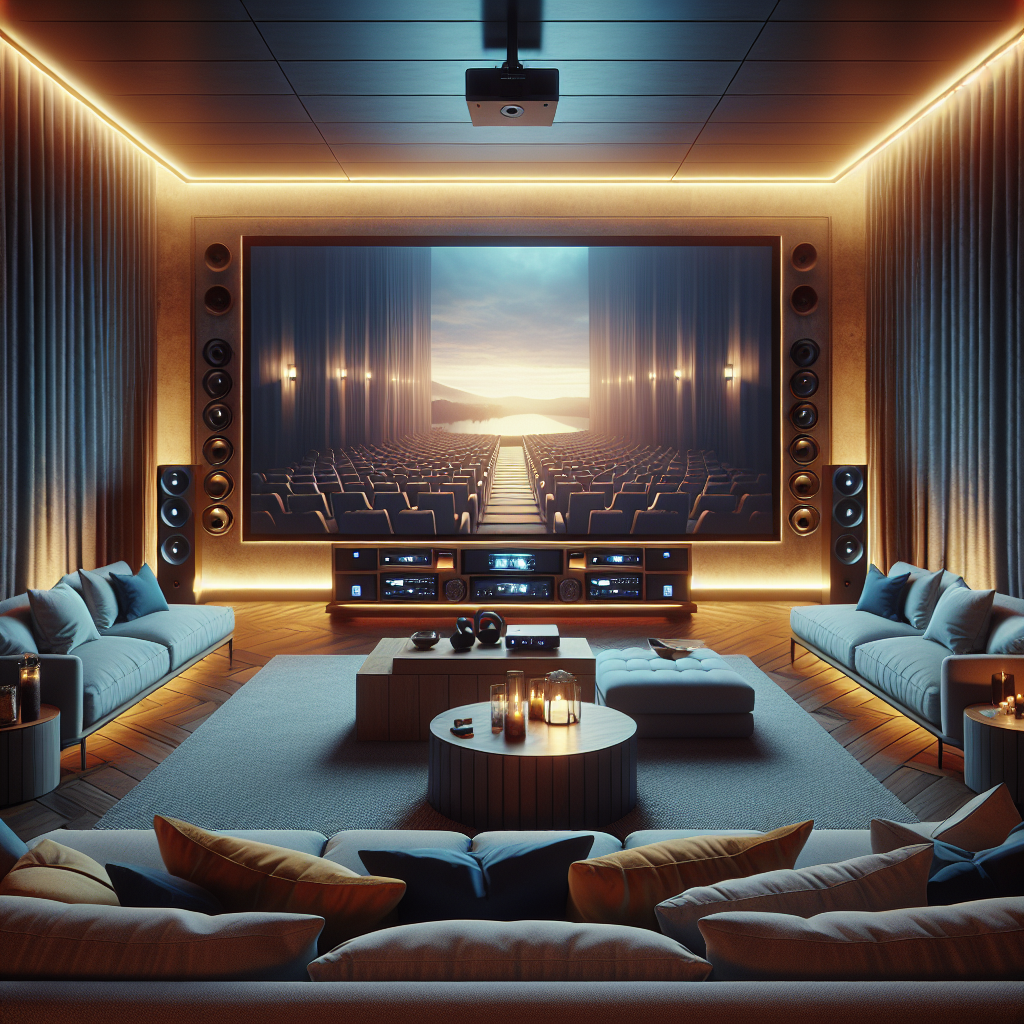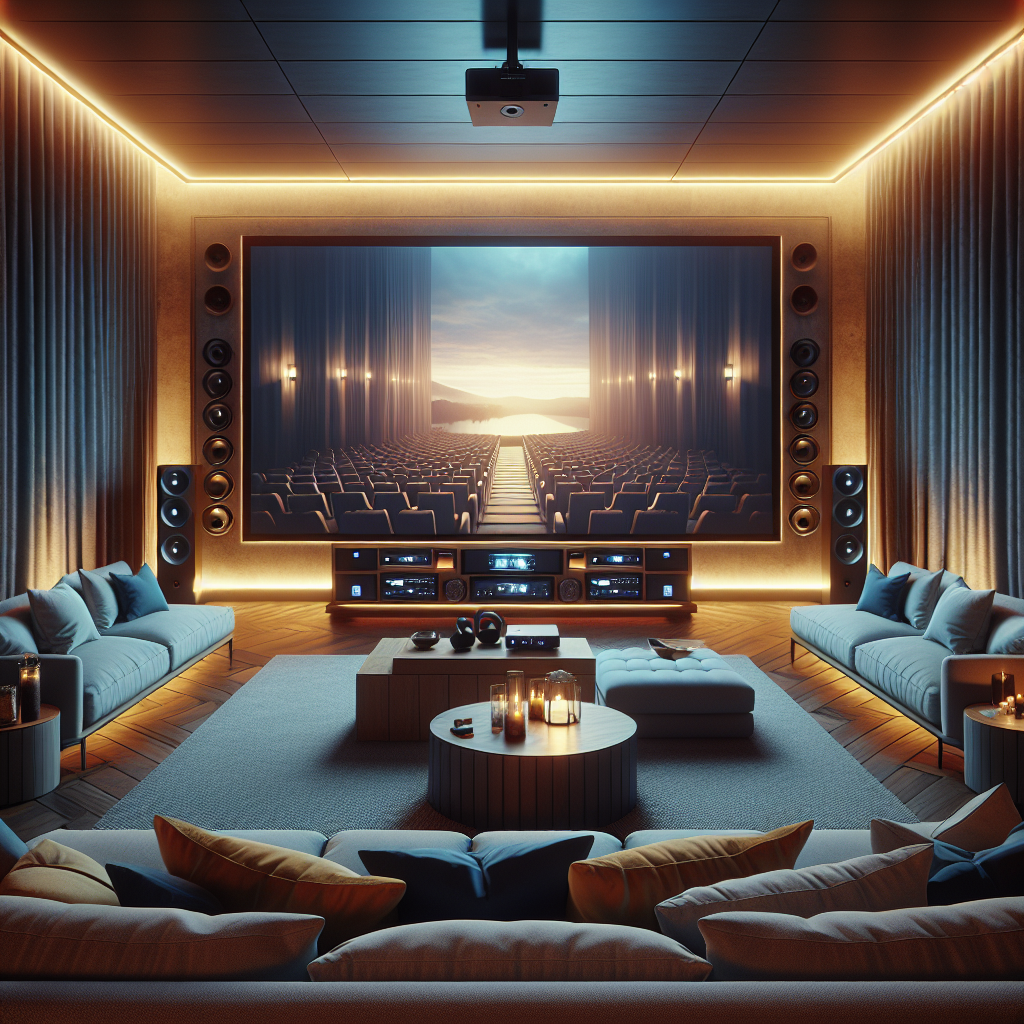Imagine being able to bring the cinematic experience right into the comfort of your own living room. With home theater setups, you can do just that. From high-definition screens to immersive surround sound systems, these setups have the power to completely transform your living room into a personal theater. Whether you’re a movie buff, a sports fan, or simply enjoy binge-watching your favorite shows, a home theater setup allows you to enjoy an enhanced and immersive viewing experience like never before. Say goodbye to crowded theaters and long queues – it’s time to create your own private oasis for entertainment right at home.
Designing your Home Theater Space
Determining the purpose of your home theater
When designing your home theater space, it’s important to first determine the purpose of your theater. Are you looking to create a cozy space for family movie nights? Or maybe you want a dedicated area for watching sports games with friends. Once you have a clear vision of how you want to use your home theater, you can start making design choices that align with your goals.
Considering the available space
Next, consider the available space in your home for your theater. Whether you have a dedicated room or are transforming your living room, it’s important to take measurements and understand the layout of the space. This will help you determine the best seating arrangement, screen size, and speaker placement for optimal viewing and sound quality.
Choosing the right seating arrangement
The seating arrangement is crucial for creating a comfortable and immersive home theater experience. Deciding between individual theater seats or a large sectional sofa will depend on the size of your space and personal preferences. Consider factors such as the viewing distance from the screen, the number of seats needed, and the level of comfort desired. Remember, the goal is to create a space where everyone can enjoy the movie or show without any obstructions or discomfort.
Optimizing the lighting in your home theater
Lighting plays a significant role in the overall ambiance of your home theater. It’s important to create a dark environment where you have full control over the lighting. Consider installing blackout curtains or blinds to block out any natural light during daytime viewing. Additionally, you may want to incorporate dimmable lights or LED lighting strips to create a cozy atmosphere. Don’t forget to also pay attention to lighting control during daytime viewing to avoid any screen glare that can affect the picture quality.

Choosing the Perfect Screen
Understanding the different types of screens available
When it comes to screens for your home theater, you have several options to choose from. The most common types include fixed-frame screens, motorized screens, and retractable screens. Fixed-frame screens provide a sleek and seamless appearance, while motorized screens allow for easy retractability. Retractable screens are great for multipurpose rooms that need to transform from a theater space to a regular living area.
Determining the ideal screen size for your space
Selecting the right screen size is essential for a truly immersive viewing experience. Factors to consider when determining the ideal size include the viewing distance, the aspect ratio of the screen, and the available space. It’s important to strike a balance between a screen that is large enough for an immersive experience but also suitable for the size of the room. Remember, a screen that is too large for a small space may result in a strained viewing experience.
Considering the aspect ratio of the screen
Aspect ratio refers to the width and height of the screen. The most common aspect ratios for home theaters are 16:9 and 2.35:1. The 16:9 ratio is ideal for general use and is compatible with most content. On the other hand, the 2.35:1 ratio provides a cinematic experience, but some content may require masking to fit the screen properly. Consider the type of content you will be watching and choose the aspect ratio that best suits your needs.
Exploring options for 3D and curved screens
If you’re looking to take your home theater experience to the next level, you may want to consider 3D or curved screens. 3D screens can provide an extra dimension of immersion, allowing you to feel like you’re a part of the action. However, keep in mind that not all content is available in 3D, and some viewers may experience discomfort or fatigue from prolonged 3D viewing. Curved screens, on the other hand, offer a more immersive experience by wrapping the viewer in the picture. They can create a greater sense of depth and can be particularly beneficial for larger home theaters.

Selecting the Right Projector
Understanding the key specifications of projectors
When choosing a projector for your home theater, it’s important to understand the key specifications that can affect the image quality. This includes the brightness, contrast ratio, throw distance, lens shift capabilities, native resolutions, and frame rates. Each specification plays a significant role in the overall performance of the projector and should be considered based on your specific needs and preferences.
Determining the ideal brightness and contrast ratios
Brightness and contrast ratios are crucial for achieving vibrant, high-quality images. The brightness of a projector is measured in lumens, with higher lumens providing a brighter image. Consider the ambient lighting conditions in your home theater space. If the room is completely dark, you may want to invest in a projector with higher lumens to ensure a bright and clear image. Contrast ratio, on the other hand, determines the difference between the darkest and brightest parts of the image. A higher contrast ratio will result in more detail and depth in the picture.
Considering the throw distance and lens shift capabilities
The throw distance refers to the distance between the projector and the screen. It’s important to consider the throw distance to ensure the projector can be positioned in your home theater space without any obstructions. Additionally, lens shift capabilities allow you to adjust the position of the projected image vertically or horizontally without physically moving the projector. This can be useful if you need to adjust the image to fit the screen properly.
Exploring options for native resolutions and frame rates
The native resolution of a projector refers to the number of pixels it can display. Higher resolutions, such as 1080p or 4K, will provide sharper and more detailed images. Consider the type of content you will be watching and choose a projector with a resolution that will enhance your viewing experience. Frame rate refers to the number of individual images displayed per second. A higher frame rate results in smoother motion and can be particularly beneficial for action-packed movies or gaming.

